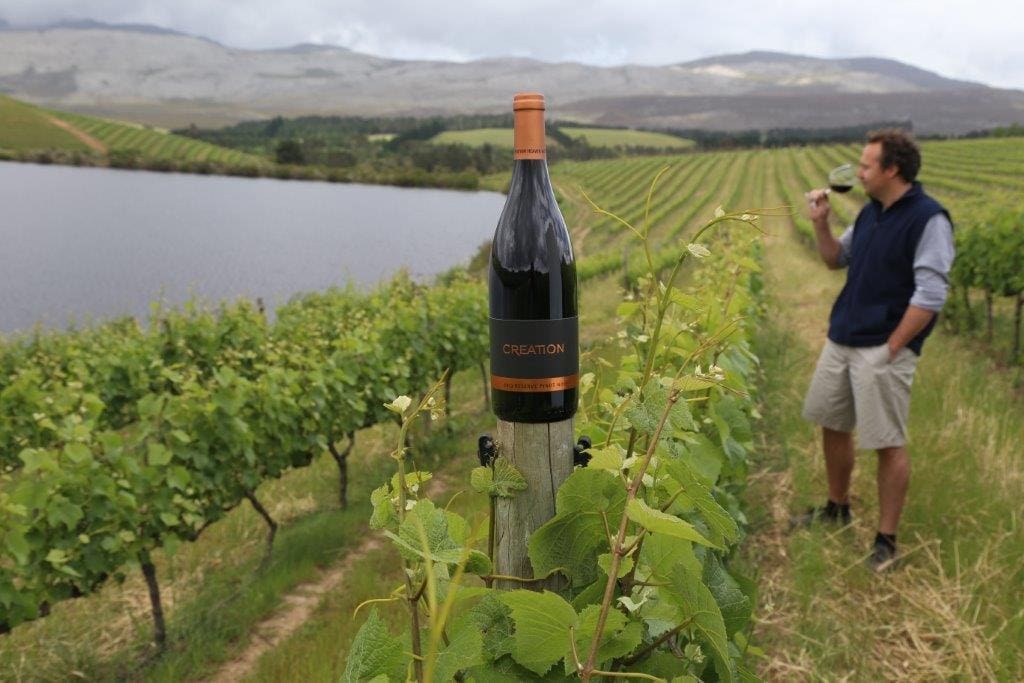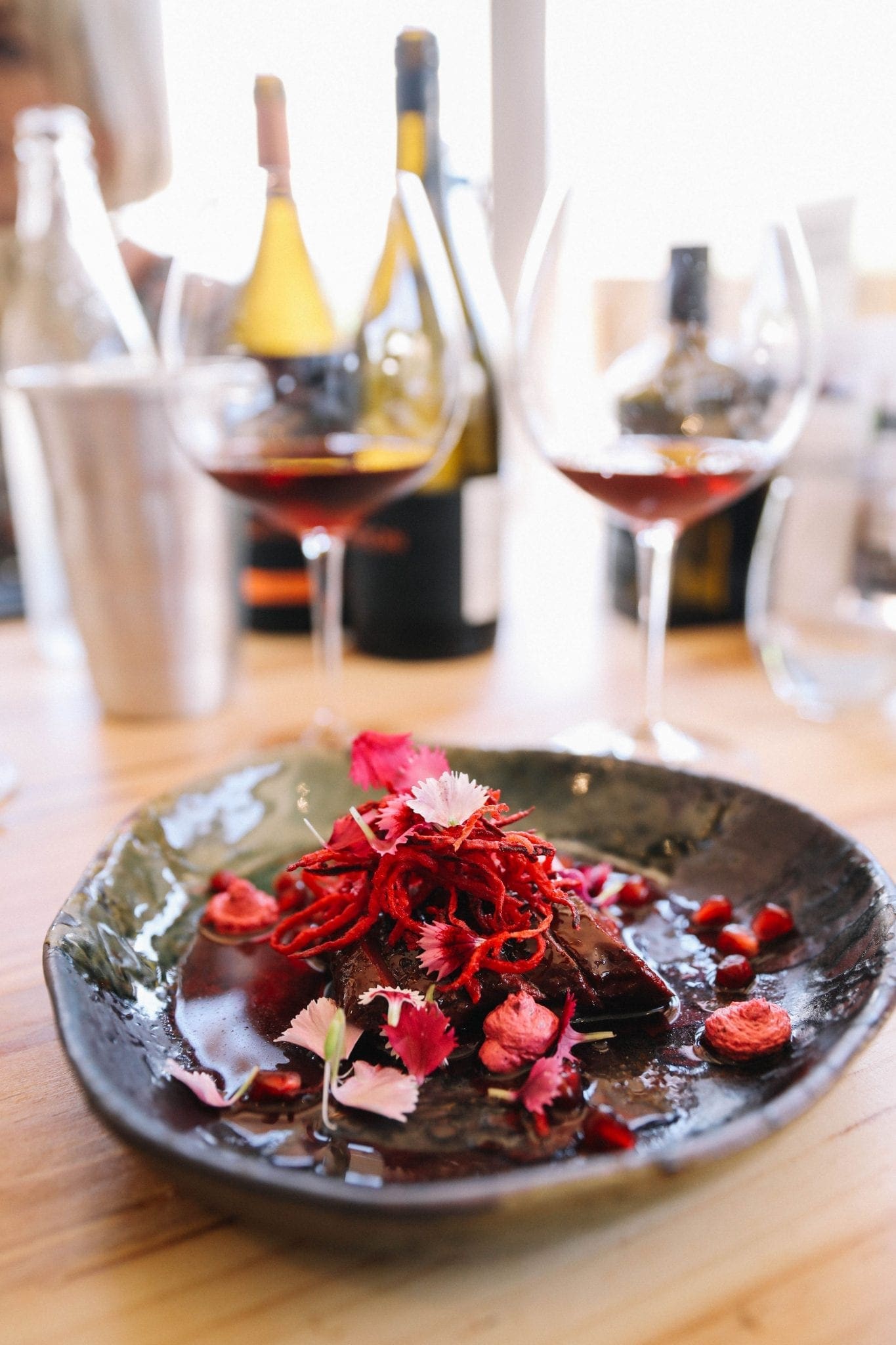TUESDAY, August 18, 2020 is International Pinot Noir Day so raise a glass and drink a toast to this beautiful cultivar. And not just any glass…
If you can, get your paws on a Reidel glass, one which is specifically designed for Pinot Noir. They’re not inexpensive (but that’s all relative I suppose) and therefore come with built-in anxiety you’re going to break them. I feel mine (a gift) should be wrapped in velvet and kept in a locked chest, and be taken out on special occasions to be gazed upon. Or, I could just use them in the evening in front of the television and imagine I am very grown up.

There are real reasons why you should drink your Pinot from such a vessel, explains Carolyn Martin from Creation Wines, which uses this glassware in its tasting room at the Hemel-en-Aarde estate.
“What would be fun, is if you have a paper cup, a normal water glass, normal wine glass and the Pinot Noir glass, pour a little sample into each,” she says. “Start with the Pinot glass as a control. Then go back and taste from the other glasses and see how disappointing it can be.
“Pinot Noir is all about texture, intensity and layers of complexity of flavour. It’s light and elegant, and velvety on the palate. From a flavour point of view you will notice in the paper cup you won’t get all the beautiful aromas; 80% of what we smell is what we taste so those aromas are important.
“The shape with the big bowl allows quite a bit of surface air on the wine so it can breathe, while tighter top captures all of those aromas so you get roses, and notes of berry flavours, which would disappear if you had it in a cup or a water glass.
“The other thing that’s important is how the glass directs the wine onto your palate. You need that cold cut crystal rim, not a speed bump on the top which slows down all the flavours and textures. Because it’s narrowed slightly on top, the wine doesn’t rush over your tongue like a waterfall; it goes down the centre of your tongue.
“We’re looking for freshness in Pinot Noir, and the slight narrowing of the glass allows that.”
As for the terror of smashing one of these graceful glasses against the tap, Carolyn’s advice is simple and sensible: don’t wash them in the evening, leave them till the morning.

Her husband Jean-Claude – JC – is the viticulturist and winemaker at Creation, and Pinot Noir is his favourite cultivar. He tells his story with deep passion. As in ask him one question, and he’ll talk at length. There are three in the range: Estate (a blend), Reserve and Art Of Pinot Noir (single block).
One of the fascinating things about Pinot Noir, says JC, is that it’s not very often the red wine with which you begin your career (you’ve got to love that, it’s so serious). “Most people will start off preferring a Cab Sav or Syrah. If they don’t really have the chance to drink high level Pinot Noir, they may give up and stick to others.

“As soon as you get in a position to have a chance to drink those top quality high end Pinots I think it really can start to hook you in a way that won’t let go,” he says.
The three Pinots demonstrate what Creation does, continues JC. “The idea with Pinot is your ultimate goal is always to have pure site reflection in the glass. This was introduced to perfection in Burgundy and copied all over the world.
“It’s a cultivar whose site does reflect quite well in the glass so therefore as we have extra vineyard age on our estate – coming close to 20 years – I think we are the point of getting into the kind of expression of different sites. Although soil structure is the same, there are different aspects, different plants, microclimates.
“In Burgundy a site can be 2000 square metres, here a single block can be up to two hectares, so not every row will be the same. When we talk about single block, it can refer to a section of it.
“What is underestimated is that using grapes from different sites can result in a very elegant Pinot Noir. It doesn’t have to be single block to made a good wine.”
When it’s young and fresh, JC advises that you decant before drinking. “Our wines perform best maybe after five years, up to 10 or 15,” he says.
Reflecting on how he made Pinot a decade ago, and how he makes it now, JC says he is much more relaxed and confident. “From 2017 we decided to pretty much avoid additives – normal schooling teaches adding enzymes to extract more colour or tannins to affect mouthfeel. We want to make wine with what nature gave us. We also work with very low sulphur levels. Why put in something that doesn’t smell nice?”
International Pinot Noir Day is an excellent reason to salute the cultivar around the world, says Carolyn. “Funnily enough, I know sometimes people get to Pinot Noir and become great wine appreciators, but because we have it in our tasting room, when people are generally white wine drinkers, we find it’s a good way to convert them easily to red wine because they love the silkier tannin structure and aromatics on the wine. It’s a great way to start enjoying red wines.
“It’s a super versatile wine which can be enjoyed with so many different kinds of food – fish or shellfish to a wonderful winter roast. On a global scale it’s possible to have it in every climate in every country because it’s not a huge heavy red wine or a light delicate white.”

Food and wine aficionados will be posting on social media and getting together and having that particular wine of choice for their dinner on the day, says Carolyn.
She relates how Remington Norman, foremost author of books about Burgundy, said to her: “Oh how exciting! I had almost forgotten it was International Pinot Noir Day. How wonderful to celebrate this cultivar. I’m going to be raising a toast to you and your families while celebrating with friends and that is the wine we are going to choose for our lunch and our dinner on that day.”
It’s a very fickle grape, says Carolyn. “The bunches are so tiny and so beautiful and so perfect – they’re almost like little hearts in the palm of your hand. It’s about honouring the delicacy and ethereal quality of Pinot Noir and the versatility of it.”
And if that doesn’t make you want to go open a bottle right now, I don’t know what will.
- Serve it slightly chilled at 14-18 degrees but not much warmer than that. Room temperature is different all over the world. Too cold or too warm and you won’t pick up the aromatic nuances.

#internationalpinotnoirday
#lovecreationwines
#princecharmingpinot
